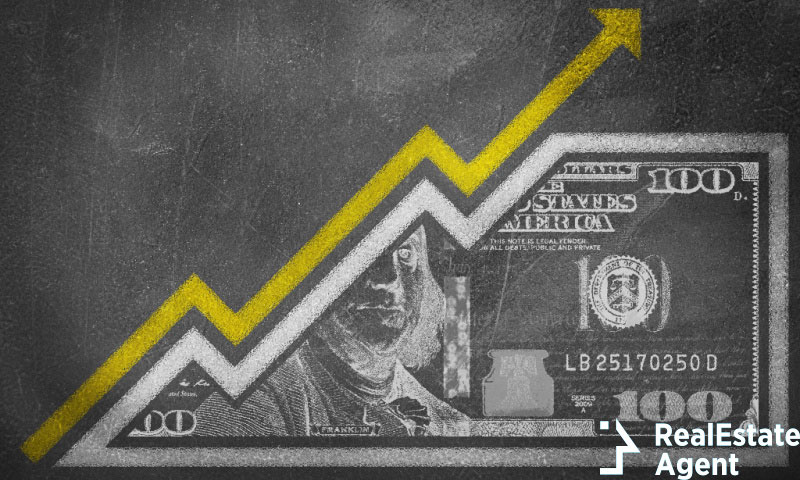“The strength of a nation’s currency is based on the strength of that nation’s economy” (former President Richard Nixon.) Though Tricky Dick might not have been right about many things, the current rise in power of the American Dollar definitely seems to reinforce his views. The USD never truly lost its appeal in the international financial world, yet 2022 brought another impressive upsurge.
Has the power of the USD currency always fascinated you? Why has it risen so high to become the world’s top currency? Join us as we investigate the course of its success and present dominance. Besides, you might be interested in foolproof financial tips to decide where to invest your hard-earned Dollars.
Actualities at the currency exchange
In July 2022, the American Dollar reached parity with the Euro, one of its greatest currency nemesis. And, as long as the Federal Reserve raises the interest rates (as opposed to the middling European Central Bank’s weak strategy), the Russian-Ukraine war continues, and oil and gas prices are increasing in Europe, the Dollar will keep up a good fight for sure.
The rise of the American currency is due to numerous factors. Did you know, for example, that many foreign investors found lucrative investment opportunities on US soil once US borders opened up for Europe?
A short history of the rise of the American Dollar
We must look back in time to get a clear picture of today’s situation concerning the USD.
The applicable Gold Standard until it wasn’t any longer
In 1871 most countries established their currencies that the so-called Gold Standard endorsed. This principle implied exchange stability and currency convertibility. The Great War in 1914 ended this practice as the Gold Standard couldn’t “battle” the economic instability caused by the war.
Government finances virtually went to pieces. Yet, it made them realize they needed another system since the Golden Standard couldn’t hold up against scrutiny in bad times. By all means, it came as a hard-to-swallow financial realization. Recessions, economic depressions, and banking crises came and went between the two world wars. In the meanwhile, countries couldn’t restore the gold’s credibility. Currency exchange rates also went haywire.
WWII brought the USD to the forefront.
Finally, the Bretton Woods agreement, signed by 44 governmental representatives in 1944, stated that the USD should determine the exchange rate for all foreign currencies. Why the Dollar specifically? The United States held three-fourths of the world’s gold supply, becoming synonymous with economic stability.
The USD came to dominate the financial world after WWII. The US economy made a giant leap forward and became number one worldwide as other countries tried to rebuild. Generally, you could say that wars abroad and the subsequent economic recovery positively influence the USD’s currency rate. In a crisis, only the Dollar seems to be a safe haven.
1971 a “minor” bump for the Dollar
The USD made it to be the official currency reserve of the world. Countries could convert their local currencies into USD and gold if they wished. 1971 defined a watershed moment as the States started flooding the market with Dollars. They printed money ‘in extremis’ to back up the Vietnam War. Countries worldwide raised their concerns about the currency’s stability and turned their reserves back into gold. Let us add that many investors still would bet on gold as one of the best and most stable investing opportunities.
The international response resulted in the US sustaining a heavy financial blow and needed Nixon’s intervention to break up the Dollar-Gold relationship. The floating exchange rate came into force, meaning that a country’s currency is determined by supply and demand relative to other nations’ currencies.
President Nixon, in fact, exposed the USD to inflation because it wasn’t backed by gold anymore. Nevertheless, the former president’s cabinet adopted a set of laws called the Nixon Shock, trying to put the American economy back on track.
The value of the USD can trigger a complex chain of events.
The Dollar became the ultimate symbol of stability and the currency of choice worldwide. The fluctuations in the Dollar impact the US stock market on the New York Stock Exchange and the complex financial workings at NASDAQ.
Furthermore, the change in currency value can create a ripple effect in the world’s economy, influencing the international stock market as well. So, there’s no exaggeration when we state that the US economy can elevate or impair the economy of most countries around the world.
The Federal Reserve takes the central stage.
The Federal Reserve can change the States’ money supply in the shape of quantitative easing and tightening. These two refer to monetary policies whereby the Fed can buy government bonds and stocks to infuse money into the economy to improve economic activity. Tightening defines the opposite event: the central bank sells its financial assets to various institutions and other financial markets. This policy aims to lower bond prices and boost interest rates, which we’ll circle back to in short.
2020 brought the world to the brink of another financial catastrophe due to the Covid pandemic. The US began printing money en mass (more than a fifth of its supply) to save the economy. It’s no wonder the US economy soon bumped into an 8.3 percent inflation, a forty-year record! The solution? The Fed started to push its interest rates upwards.
How do interest rates work?
Everybody expected the Federal Reserve to raise interest rates and combat inflation in 2022. To stabilize the economy, the Fed raises or lowers the federal funds rate (in other words, the interest rate financial institutions impose on another to lend money urgently.) As the interest rates are higher, fewer people and companies borrow money, job growth slows, and spending drops. In addition, higher interest rates motivate people to save. Another direct result of inflated rates is that inflation slows while the supply and demand balance each other.
High-interest rates will also affect the housing market in the long term. Buyers aren’t as keen on purchasing new properties as in times of low-interest rates.
The great news is that higher interest rates will successfully combat inflation. The bad news is that consumers will immediately be affected by higher interest rates on their credit cards, mortgage payments, and loans. In a nutshell, high-interest rates are suitable for the economy. Still, they influence the regular Joe in the short term, where it hurts the most, their pockets.
How does the Fed’s policy influence the currency?
Undoubtedly, the American central banking system represents a more aggressive monetary policy than its European counterpart. As a reminder, the federal funds rate was 2.25 to 2.5 percent in September 2022. The Fed will likely increase its interest rates to three percent by the end of the current year. However, by doing so, the Fed turns the Dollar into a liquid and stable currency for foreign investors.
The foreign portfolio investment in long-term American bonds, stocks, and securities increased by 139 percent between February 2020 and February 2022. At the same time, the FDI (foreign direct investments) also grew substantially in the post-Covid period.
USD offers safety in a crisis-stricken environment
The world needs a reliable currency, especially when people face economic troubles in most parts of the world. And remember, Europeans encountered a time of crisis with the Russian-Ukrainian war. It’s no surprise that the Euro plummeted to a five-year low. In addition, an impending gas shortage will probably drive prices up because about forty percent of Europe’s natural gas supply belongs to Russia.
The ripple effect wasn’t late. The Euro depreciated by approximately seven percent against the Dollar in June 2022. And to twist the knife into the fresh wound, the European Union anticipates a 3.6 percent steep decline in the gross domestic product by the end of 2022. In short, no one sees the light at the end of the tunnel in 2023 as the European GDP might fall even lower. Therefore, international investors take no chances and tend to sell their Euro-related investments.
How do the USD and oil prices influence each other?
Did you know that the US inadvertently benefits from the ongoing European war in terms of oil revenue? The Dollar’s strength is conversely proportionate to the oil prices.
The oil market around the world does business in USD. Once the Dollar increases, countries using other currencies won’t afford to buy as much. Also, the Petrodollar (oil export revenue or payment in Dollars for exporting oil) falls. As a result, the demand for oil drops, forcing oil prices to decrease as well.
Warren Buffet, an American business magnate and investor, who registered an unbelievable financial success story, also puts his money on oil and gas stocks.
Hold on to your USD-denominated assets!
If we had to place our bets on the Euro or USD, we would choose to play the waiting game and hold on to our USD-nominated valuables and cash. Apparently, any other currency is susceptible to losing its value to inflation at a high rate. Thus, you can wait for better investment opportunities during a recession (for example, buying US stocks and Treasuries at a discounted price) once the international politics and market settle.
Final thoughts
The US benefited from the instability of the Gold Standard in times of great economic crisis during the two world wars. Thus, the American Dollar became the leading currency because it offered stability and the promise of constant growth.
To keep inflation and eventual sprawling economic booms in check, the Federal Reserve, America’s central banking system, adapted the policy of controlling interest rates on loans and bonds.
Since the US is battling inflation, the Fed was forced to raise interest rates. Though bad news for American consumers, high-interest rates boosted the power of the USD as an international currency. Consequently, your money kept in Dollars is worth more abroad and allows you to invest more in global assets.
How did you experience the rise of the American Dollar internationally? Did you notice that your money is worth more in Europe and Asia? Your feedback is important to us. Please, share your opinion and observations in the comment section below! Did you enjoy this article? Please upvote and share it on your social media profile!


















